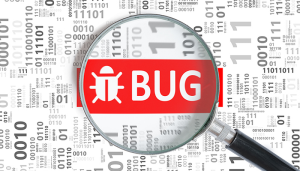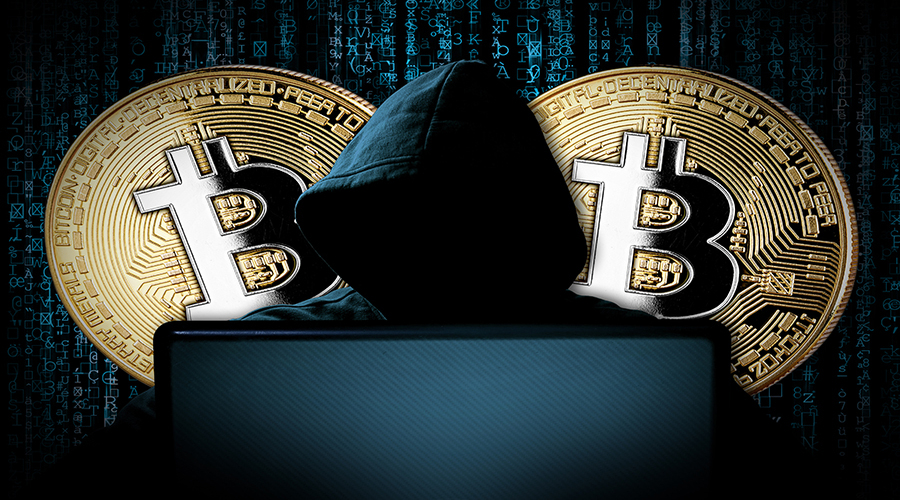Introduction
The increasing popularity and value of cryptocurrencies have made cryptocurrency exchanges lucrative targets for hackers. Hacks and security breaches on these platforms can result in significant financial losses and damage to investor confidence. This article explores the nature of hacks and security breaches on cryptocurrency exchanges, their impact on the crypto market, and measures to enhance security and protect user funds.
Understanding Cryptocurrency Exchange Hacks
Cryptocurrency exchange hacks involve unauthorized access to the exchange’s infrastructure or wallets, resulting in the theft of digital assets. The following factors contribute to the vulnerability of exchanges:
- Centralized Nature: Centralized exchanges store users’ assets in a centralized system, making them attractive targets for hackers seeking to exploit vulnerabilities in security measures.
- Human Error: Mistakes by exchange employees, such as misconfigurations or falling victim to social engineering attacks, can provide opportunities for hackers to breach the system.
- Sophisticated Techniques: Hackers employ various techniques, including phishing, malware attacks, and code vulnerabilities, to compromise exchange platforms and gain unauthorized access to user funds.
Impact of Exchange Hacks
The impact of exchange hacks extends beyond the affected platform and users:
- Financial Losses: Hacks can result in the theft of significant amounts of cryptocurrencies, leading to financial losses for users and exchanges alike.
- Market Volatility: News of exchange hacks often triggers panic selling and market volatility, causing widespread price fluctuations across the crypto market.
- Loss of Trust: Security breaches erode trust in exchanges, hindering the adoption of cryptocurrencies and impeding the development of the crypto ecosystem.
Security Measures and Best Practices
Cryptocurrency exchanges can implement robust security measures to mitigate the risk of hacks and protect user funds:
- Multi-Factor Authentication: Enforcing multi-factor authentication for user accounts adds an extra layer of security, making it harder for unauthorized individuals to gain access.
- Cold Storage: Storing a majority of user funds in offline cold wallets, disconnected from the internet, reduces the risk of theft from online attacks.
- Regular Security Audits: Conducting regular security audits and penetration tests helps identify vulnerabilities and implement necessary patches and updates.
- Insurance Coverage: Exchanges can provide insurance coverage for user funds, offering an additional layer of protection in case of security breaches.
Lessons Learned from Major Exchange Hacks
Analyzing and learning from major exchange hacks can help prevent similar incidents in the future. Additional points to consider include:
- Case Studies: Studying high-profile exchange hacks, such as the Mt. Gox and Coincheck incidents, to understand the vulnerabilities and shortcomings that led to the breaches.
- Improving Security Practices: Implementing enhanced security protocols and measures based on the lessons learned from past hacks, including infrastructure security, secure coding practices, and incident response plans.
Regulatory Response to Exchange Hacks
Regulatory bodies play a significant role in responding to and addressing exchange hacks. Additional points to consider include:
- Regulatory Frameworks: Developing comprehensive regulatory frameworks that require exchanges to implement stringent security measures and conduct regular audits to protect user funds.
- Reporting Requirements: Requiring exchanges to promptly report security breaches and cooperate with regulatory investigations to ensure transparency and accountability.
Cryptocurrency Insurance and Risk Mitigation
Insurance coverage specific to cryptocurrencies can help mitigate the financial impact of exchange hacks. Additional points to consider include:
- Insurance Providers: The emergence of specialized cryptocurrency insurance providers offering coverage against hacks and thefts, providing users with an added layer of protection.
- Risk Assessment and Premiums: Insurers assess the security measures and risk management practices of exchanges when determining coverage and premiums, incentivizing exchanges to prioritize security.
Decentralized Exchanges and Security Advantages
Decentralized exchanges (DEX) offer increased security advantages compared to centralized exchanges. Additional points to consider include:
- Custody of Funds: In DEX platforms, users retain custody of their funds, eliminating the risk of a single point of failure or a central target for hackers.
- Smart Contract Audits: Conducting thorough audits of smart contracts used in decentralized exchanges to identify and address potential vulnerabilities that could be exploited by attackers.
Role of Bug Bounty Programs

Bug bounty programs can help identify vulnerabilities in cryptocurrency exchange platforms before they can be exploited by hackers. Additional points to consider include:
- Incentivizing Security Research: Offering rewards to security researchers who responsibly disclose vulnerabilities encourages them to proactively find and report potential issues.
- Collaboration with the Community: Engaging the crypto community in the security of exchange platforms by encouraging participation in bug bounty programs fosters a collaborative approach to ensuring platform safety.
By exploring these additional subtopics, we can provide a more comprehensive understanding of the lessons learned from major hacks, the regulatory response, cryptocurrency insurance, decentralized exchanges, and bug bounty programs in mitigating the risks associated with hacks and security breaches on cryptocurrency exchanges.
The Importance of User Security Practices
Users have a crucial role in ensuring the security of their cryptocurrency assets on exchanges. Additional points to consider include:
- Password Management: Encouraging users to create strong, unique passwords and regularly update them. Implementing password managers or multi-factor authentication (MFA) for added security.
- Phishing Awareness: Educating users about phishing attacks and providing tips to recognize and avoid suspicious emails, links, and websites that may attempt to steal their login credentials.
- Two-Factor Authentication (2FA): Emphasizing the use of 2FA, such as authenticator apps or hardware tokens, to provide an extra layer of protection against unauthorized access.
Security Audits and Transparency
Regular security audits and transparency practices contribute to maintaining the trust of users and the overall security of cryptocurrency exchanges. Additional points to consider include:
- Third-Party Audits: Engaging reputable security firms to conduct independent audits of exchange platforms’ security infrastructure, code, and protocols.
- Transparency Reports: Providing regular transparency reports that outline security measures, audits conducted, and any vulnerabilities identified and addressed.
Hot Wallets vs. Cold Storage
Understanding the differences between hot wallets and cold storage options is crucial for users and exchanges in safeguarding cryptocurrencies. Additional points to consider include:
- Hot Wallets: Explaining the benefits and risks associated with hot wallets, which are online wallets connected to the internet for convenient trading but carry a higher vulnerability to hacks.
- Cold Storage: Highlighting the advantages of cold storage solutions, such as hardware wallets or paper wallets, which store cryptocurrencies offline and provide enhanced security.
Incident Response and Communication
Establishing robust incident response plans and effective communication protocols is essential to minimize the impact of security breaches. Additional points to consider include:
- Internal Response Teams: Designating internal teams responsible for promptly responding to security incidents, investigating breaches, and implementing necessary measures to mitigate damage.
- User Notifications: Ensuring timely and transparent communication with affected users, providing clear instructions on necessary actions to secure their accounts and assets.
Exchange Partnerships and Collaborations
Exchanges can strengthen their security measures through partnerships and collaborations with reputable organizations. Additional points to consider include:
- Cybersecurity Firms: Collaborating with cybersecurity firms to enhance threat detection capabilities and share intelligence on emerging security risks.
- Blockchain Security Initiatives: Participating in blockchain security initiatives, industry associations, and open-source projects focused on developing and sharing best practices for secure exchanges.
The Role of Regulatory Compliance
Regulatory compliance plays a significant role in enhancing security and protecting user funds on cryptocurrency exchanges. Additional points to consider include:
- Know Your Customer (KYC): Implementing robust KYC procedures to verify the identities of users and prevent fraudulent activities.
- Anti-Money Laundering (AML): Adhering to AML regulations to prevent illicit activities and enhance the overall security of the exchange.
- Data Protection: Complying with data protection and privacy regulations to safeguard user information from unauthorized access or breaches.
Security Token Offerings (STOs) and Investor Protection
Security token offerings provide a regulated framework for token sales, offering enhanced investor protection. Additional points to consider include:
- Legal Compliance: STOs operate within existing securities regulations, providing investors with legal protections and greater transparency.
- Smart Contract Audits: Conducting comprehensive audits of smart contracts underlying STOs to ensure their security and protect investors from potential vulnerabilities.
Security Innovations: Biometrics and Hardware Security Modules (HSM)
Exploring innovative security measures, such as biometrics and Hardware Security Modules (HSMs), can enhance the protection of user funds. Additional points to consider include:
- Biometric Authentication: Implementing biometric authentication, such as fingerprint or facial recognition, to provide secure and convenient access to user accounts.
- Hardware Security Modules: Utilizing HSMs, specialized hardware devices that securely store and manage cryptographic keys, to enhance the security of private keys and transactions.
Industry Collaboration for Security Standards
Collaboration within the crypto industry can establish security standards and best practices for exchanges. Additional points to consider include:
- Security Working Groups: Forming industry working groups comprising exchange representatives, cybersecurity experts, and regulatory stakeholders to develop and promote security standards.
- Information Sharing: Sharing information and best practices among exchanges to enhance collective knowledge and awareness of security threats and mitigation strategies.
Continuous Security Monitoring and Threat Intelligence
Implementing continuous security monitoring and leveraging threat intelligence can help detect and mitigate potential security risks. Additional points to consider include:
- Intrusion Detection Systems (IDS): Deploying IDS to monitor network traffic and detect any suspicious activities or unauthorized access attempts.
- Security Information and Event Management (SIEM): Utilizing SIEM systems to aggregate and analyze security-related logs and events for proactive threat detection and response.
By exploring these additional subtopics, we can provide a comprehensive overview of regulatory compliance, security token offerings, security innovations, industry collaboration, and continuous security monitoring in the context of hacks and security breaches on cryptocurrency exchanges.
Conclusion
Hacks and security breaches on cryptocurrency exchanges pose significant risks to user funds and the overall stability of the crypto market. By implementing robust security measures, conducting regular audits, and enhancing user education, exchanges can enhance the security of their platforms and protect user assets. Additionally, user vigilance, responsible trading practices, and community support are vital for fostering a safer and more secure cryptocurrency ecosystem.
I’m a Crypto author and I have written for some of the most popular Crypto publications. I have also been interviewed by leading Crypto media outlets. My work focuses on providing accurate and actionable information to help people invest in Bitcoin and other digital currencies.
I have over 10 years of experience in the financial sector, and hold a degree in Economics from the University of London.
